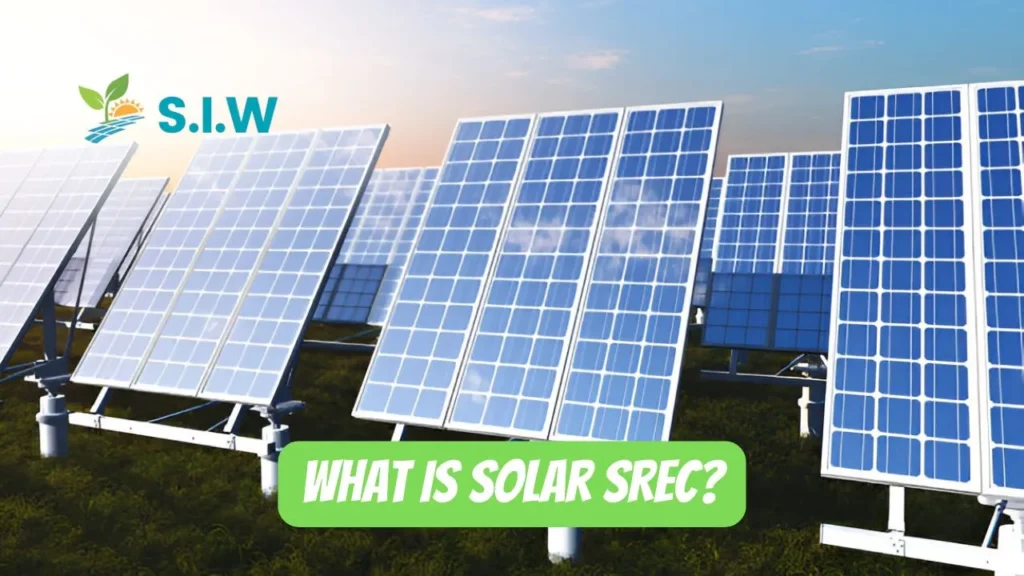Solar energy has become a critical component in the transition towards a sustainable energy future. As more people and businesses turn to solar power, understanding the economic incentives available is essential. Among the most important incentives are Solar Renewable Energy Certificates (SRECs). These certificates play a crucial role in making solar power economically viable for homeowners and businesses alike. In this article, we will delve deeply into what Solar SRECs are, how they work, and why they are significant in the solar energy market.
What Are Solar SRECs?
Solar Renewable Energy Certificates (SRECs) represent the environmental benefits of generating electricity from solar energy. When a solar energy system generates one megawatt-hour (MWh) of electricity, it earns one SREC. These certificates can be sold or traded separately from the electricity itself, providing a financial incentive for solar energy producers. SRECs are a key part of state-level policies aimed at encouraging the development of solar energy projects.
How Do Solar SRECs Work?
SRECs are part of a broader system designed to meet Renewable Portfolio Standards (RPS) set by various states. An RPS is a regulatory mandate that requires utilities to generate a specific percentage of their electricity from renewable sources. To meet these standards, utilities purchase SRECs from solar energy producers.
Here’s how the process typically works:
- Solar Energy Generation: When a solar energy system produces electricity, it also creates SRECs.
- SREC Certification: These SRECs are certified by a state-level authority, ensuring they meet specific criteria.
- SREC Sales: The solar energy producer can then sell these certificates to utilities, brokers, or other buyers on an open market.
- Utility Compliance: Utilities purchase SRECs to meet their RPS obligations. If they do not meet these requirements, they may face fines or other penalties.
This system provides an additional revenue stream for solar energy producers, making solar power more financially attractive.
The Economic Impact of Solar SRECs
The economic impact of SRECs can be significant, especially for homeowners and small businesses. By selling SRECs, solar energy producers can offset the initial cost of their solar energy systems. In some cases, the revenue from SRECs can cover a substantial portion of the installation costs over time.
The value of SRECs fluctuates based on market demand, the RPS requirements in a given state, and the overall supply of SRECs. In states with aggressive RPS targets, the demand for SRECs is higher, leading to higher prices. Conversely, in states where solar energy is abundant and RPS targets are modest, SREC prices may be lower. This dynamic creates opportunities for solar services providers to offer tailored solutions that maximize returns on SREC sales in different markets.
For example, in states like New Jersey and Massachusetts, where RPS targets are stringent, SREC markets are particularly robust, providing substantial financial returns for solar energy producers.
SRECs and Long-Term Financial Planning
When considering the installation of a solar energy system, it’s important to factor in the potential revenue from SRECs. Homeowners and businesses should evaluate the long-term financial benefits, including:
- Payback Period: The time it takes for the solar energy system to pay for itself, considering both energy savings and SREC revenue.
- Return on Investment (ROI): The overall financial return, which can be significantly enhanced by the sale of SRECs.
- SREC Market Trends: Understanding current and future market conditions for SRECs, which can impact their value over time.
Proper planning and market analysis can help maximize the financial benefits of SRECs, ensuring that solar energy investments are as profitable as possible.
State-Specific SREC Programs
Not all states have SREC programs, and the structure of these programs can vary widely. States with well-established SREC markets typically have strong RPS requirements and a high demand for solar energy.
New Jersey’s SREC Program
New Jersey has one of the most mature and lucrative SREC markets in the United States. The state’s aggressive RPS targets have created a high demand for SRECs, driving up their value. New Jersey’s SREC program has been instrumental in making the state a leader in solar energy adoption.
Massachusetts’ SREC Program
Massachusetts also has a strong SREC market, driven by its ambitious RPS goals. The state has implemented various programs to support the growth of solar energy, including the SMART program, which incentivizes solar installations while ensuring the sustainability of the SREC market.
Maryland’s SREC Program
Maryland is another state with a well-established SREC market. The state’s RPS requires utilities to obtain a significant portion of their energy from solar sources, creating a steady demand for SRECs. Maryland’s SREC prices have remained relatively stable, providing consistent returns for solar energy producers.
The Future of Solar SRECs
As the solar energy market continues to evolve, the role of SRECs may change. Some states are exploring alternative incentive structures, such as direct rebates or performance-based incentives, to complement or replace SREC programs. Additionally, as the cost of solar technology decreases, the reliance on SRECs as a financial incentive may diminish.
However, for the foreseeable future, SRECs remain a vital component of the solar energy landscape, particularly in states with strong RPS requirements. Solar energy producers should stay informed about changes in state policies and market conditions to ensure they continue to maximize their revenue from SRECs.
Key Considerations for Solar Energy Producers
- Stay Informed: Monitor state policy changes that could impact SREC markets.
- Market Analysis: Regularly assess SREC market conditions to determine the best times to sell.
- Diversification: Consider diversifying revenue streams through other solar incentives and programs.
By staying proactive, solar energy producers can continue to benefit from SRECs while contributing to the growth of renewable energy.
Conclusion
Solar Renewable Energy Certificates (SRECs) are a powerful tool for driving the adoption of solar energy. They provide essential financial incentives that make solar energy more accessible and attractive to a wide range of consumers. Understanding how SRECs work, their economic impact and the specific programs available in different states is crucial for anyone involved in the solar industry.








